For six centuries the modern capital of Austria was the helm of a continent-spanning empire, leaving behind a UNESCO World Heritage city centre and world-renowned cultural institutions.
A trip to Vienna is a whirl of Baroque palaces, grand boulevards and high culture, as rich as a slice of Sachertorte chocolate cake.
And if you ever feel overawed by the lasting statements of Imperial might, remember that this is the city of Gustav Klimt and Egon Schiele, of the lush creativity of Art Nouveau.
In the early 1900s, the men who would define the coming century seemed to converge on Vienna, and you can trace the steps of thinkers, artists and statesmen at the city’s cafes and coffeehouses.
Here’s our list of best things to do in Vienna.
1. Schönbrunn Palace
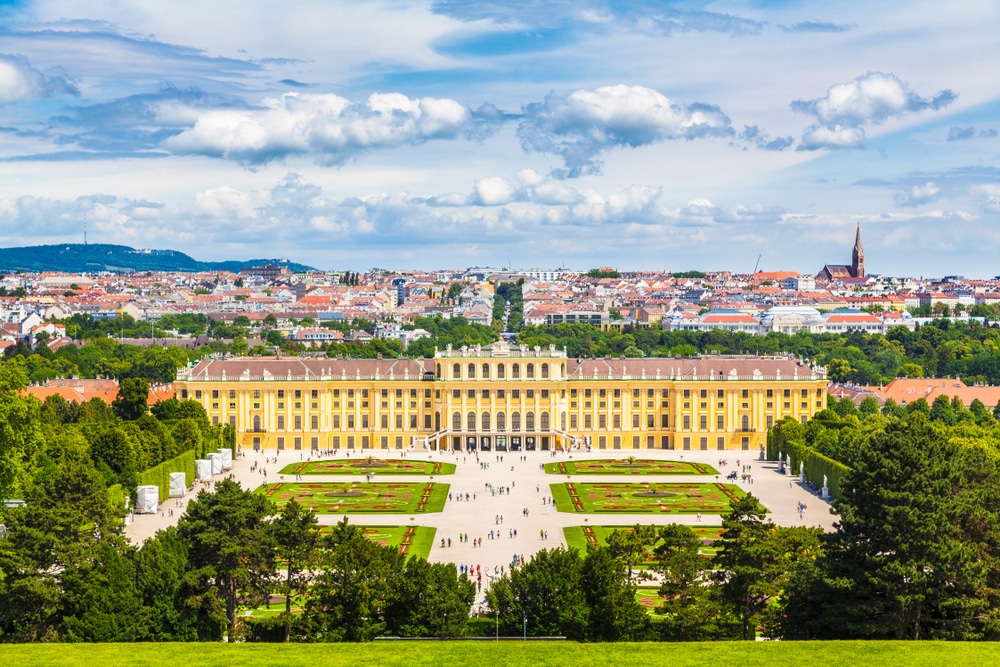 Source: canadastock / shutterstock
Source: canadastock / shutterstockStarting out as a hunting ground in the 16th century, this estate on the floodplain of the Wiener River was later developed into the colossal, 1,441-room summer residence for the Habsburg Emperors.
As we see it now the World Heritage-listed palace dates mostly from the middle of the 18th century in a rich Rococo style inside and Neoclassical on the facade.
Just thinking of the historical figures to have walked the gilded halls of Schönbrunn Palace may make your head spin.
A six-year-old Mozart played in the Mirrored Hall, Maria Theresa controlled an empire at its peak from here, Napoleon had conferences in the Vieux Laque Room, while Franz Joseph was born and died at the palace.
If there’s a single must-see, it could be the Millions Room, a high point for Rococo design, panelled with precious tropical rosewood.
Set into these panels in gilded, cartouche-like frames, are collages composed of Indian and Persian miniature paintings from the 17th century.
Website: https://www.schoenbrunn.at/
2. Kunsthistorisches Museum
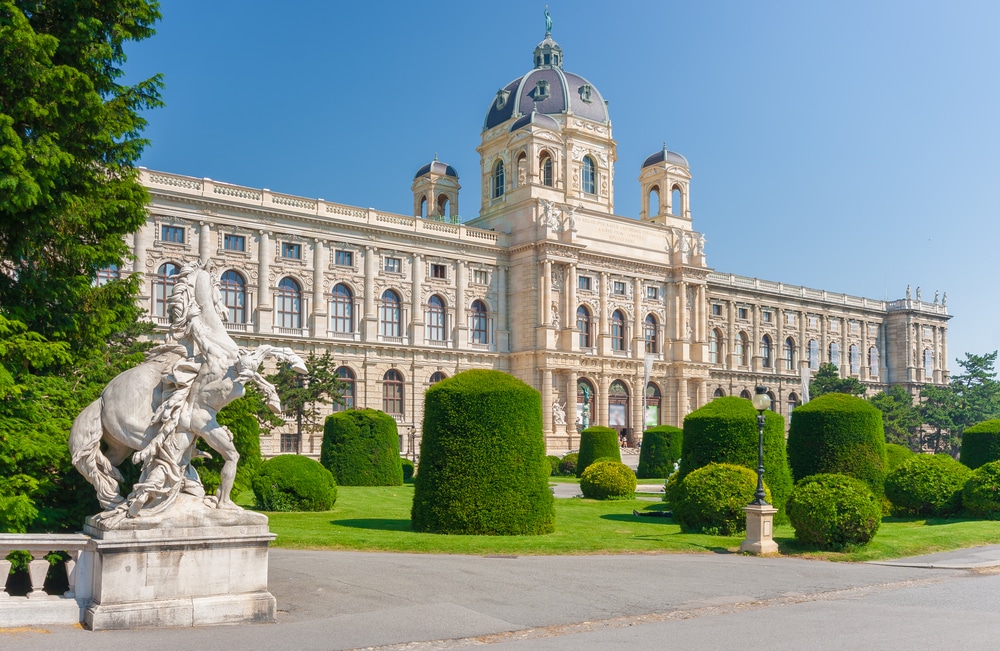 Source: canadastock / shutterstock
Source: canadastock / shutterstockIn identical buildings on the grand Ringstrasse, one of the best art museums in the world faces off against one of the top natural history museums.
The Kunsthistorisches Museum dates to 1891 as a sparkling repository for the imperial family’s art collections.
This is Austria’s largest art museum, and, in keeping with the wealth of its displays, is lavishly decorated with gold leaf, frescoes, marble and stucco.
The world’s largest array of works by Pieter Brueghel the Elder is the headline of a collection that includes pieces by Raphael, Titian, van Eyck, Tintoretto, Dürer, Rubens, Vermeer, Caravaggio, Velázquez, the list goes on.
At this location, there are also collections for sculpture, decorative arts and coins, as well as Egyptian, Near Eastern, Greek and Roman works.
Website: https://www.khm.at/
3. The Belvedere
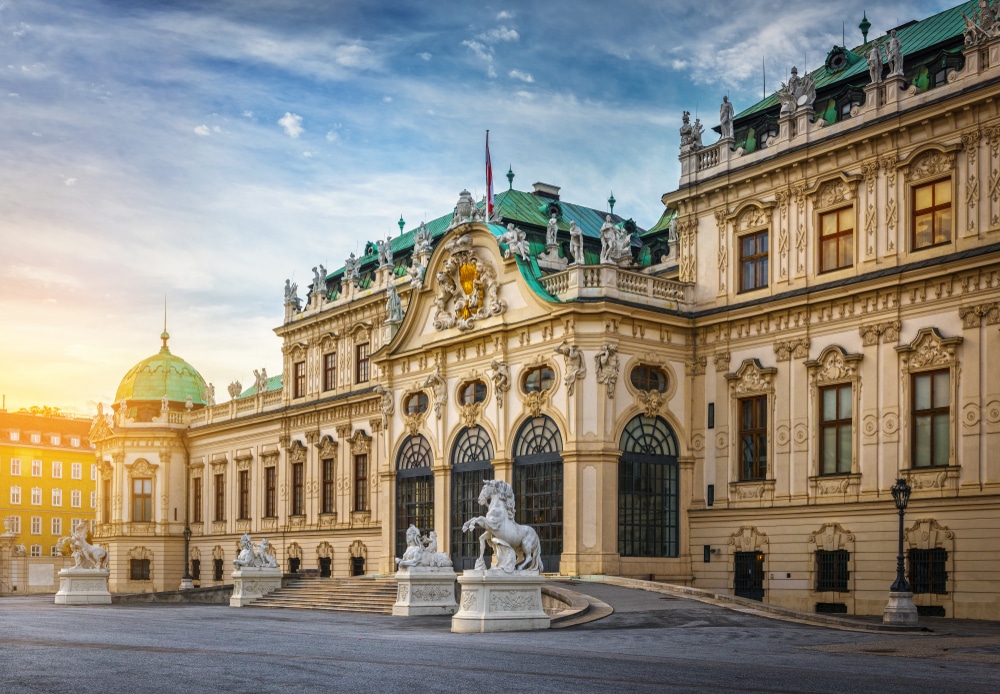 Source: Triff / shutterstock
Source: Triff / shutterstockPrince Eugene of Savoy (1663-1736) commissioned this Baroque palace complex on a gentle slope just south-east of the centre of Vienna.
At that time the imperial capital was going through a wave of optimism and prosperity after pushing back the Ottoman Empire in the Ottoman-Habsburg Wars.
The complex is made up of the Upper and Lower Belvedere.
The former, completed in the first half of the 18th century, is not just a beautiful palace, but is the showcase for the world’s largest collection of paintings by Gustav Klimt.
These include the world-renowned works from his Golden Period, like The Kiss and Judith I, while Schiele, Kokoschka, Kirchner, Delacroix, van Gogh, Monet and Renoir are just a few of the famous names also represented.
The Upper Belvedere was a place for receiving guests, but Eugene’s residence was the Lower Belvedere, with opulent spaces like the Golden Room and Marble Gallery to be toured.
After, step out into the Baroque landscape gardens, to see Europe’s oldest Alpine Garden, tiered fountains, cascades, reflecting pools and fine sculpture.
Website: https://www.belvedere.at/
4. Ringstrasse
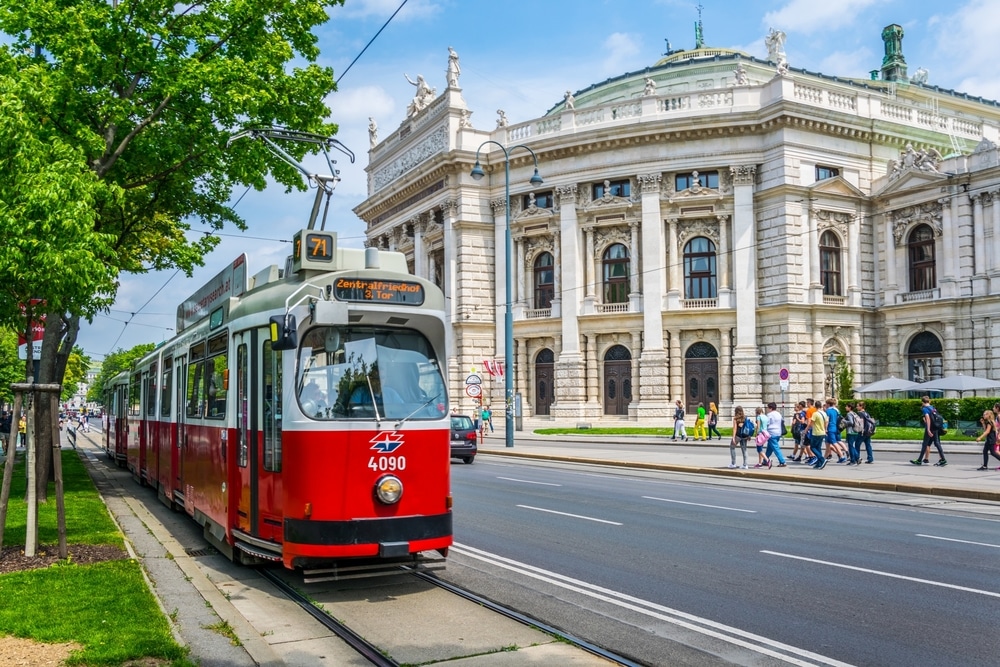 Source: trabantos / shutterstock
Source: trabantos / shutterstockBy the middle of the 19th century Vienna’s encircling fortifications had outlived their purpose, and at this time the city was expanding and modernising.
So to tie the old imperial centre with the new suburbs, a stately boulevard was plotted on the course of the old defences.
The majesty of the 5.3-kilometre Ringstrasse comes from its width, at just under 60 metres across, as well as from the resplendent Historicist buildings that took shape in the last decades of the 19th century.
The leading architects of the period were recruited for the enduring Vienna landmarks here, like the Rathaus, Museum of Natural History, Kunsthistorisches Museum, the University of Vienna and the Vienna State Opera.
Ringstrasse also became a desirable address for the new bourgeoisie, as you can tell from the long rows of mansions and palaces.
5. St Stephen’s Cathedral
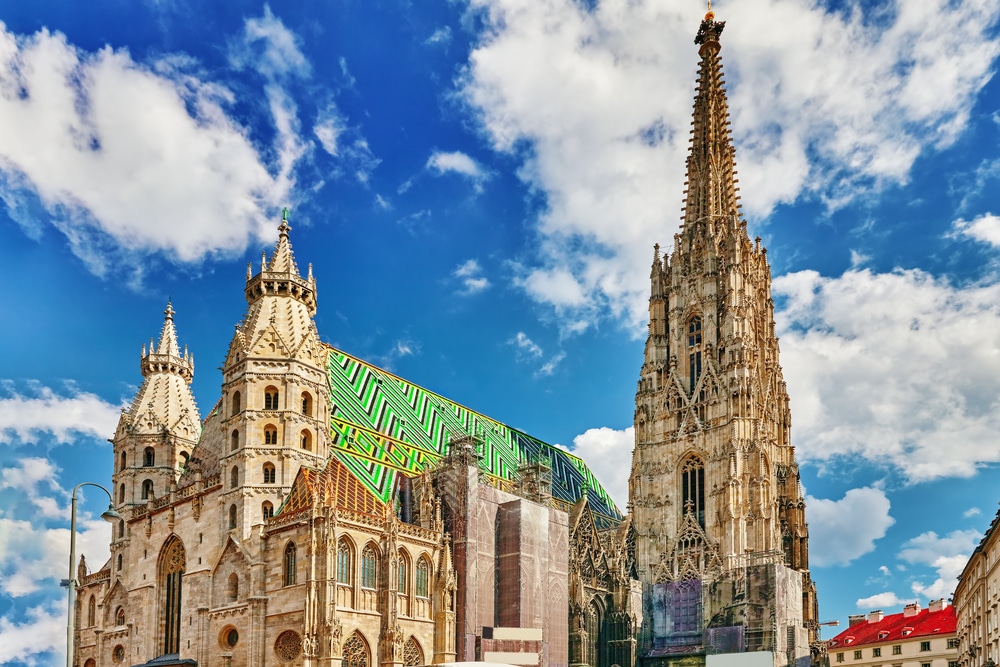 Source: V_E / shutterstock
Source: V_E / shutterstockIf there’s one image that comes to mind when people picture old Vienna it’s the sky-scraping south spire of St Stephen’s Cathedral, founded back in the 12th century.
The building is Romanesque and Gothic, but with Baroque fittings from refurbishments beginning in the 17th century.
That south tower is more than 136 metres tall and you can drag yourself up all 343 steps for an energising panorama of Vienna and its hilly backdrop.
The unfinished north tower is half the height, but among its bells is Pummerin (Boomer). This was initially cast in 1711 from the cannons of Muslim invaders, and had to be recast in 1951 after crashing to the floor during a fire in 1945. On a guided tour you can go down to the catacombs to see the spooky cemetery beneath Stephansplatz and study the surprisingly humble tombs of royals and bishops.
Website: https://www.stephanskirche.at/
6. The Hofburg
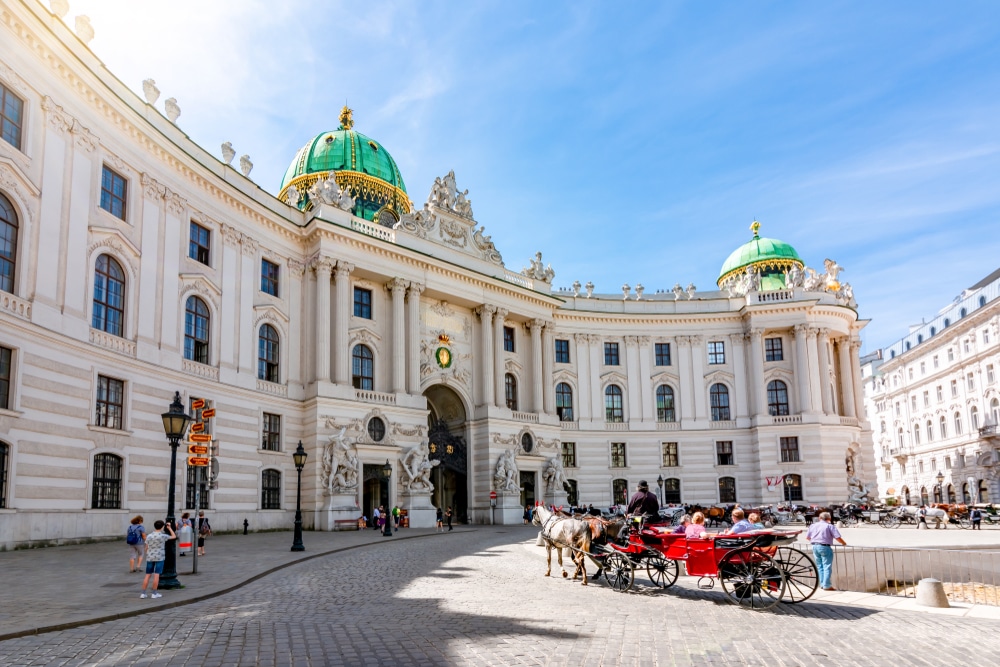 Source: Mistervlad / shutterstock
Source: Mistervlad / shutterstockFor more than 800 years the affairs of a city, state and empire have been conducted at one of the world’s largest palace complexes, which continued to grow into the 20th century.
At the centre of Vienna, this was the winter residence or the Habsburg emperors, and with each new century spawned a confusing mass of wings, residences, gardens and squares, many of which stand as museums and attractions in their own right.
We’ll come to some of the big ones like the Burgtheater, Imperial Treasury, Imperial Library and Albertina later, but that still leaves a lot to see.
You can view Franz Joseph and Elisabeth’s state apartments, and learn a little more about Elisabeth at a dedicated museum.
There’s also the Baroque Spanish Riding School, the wonderful Art Nouveau Palm House in the Burggarten and the Gothic Imperial Chapel, to hear the Vienna Boys’ Choir performing High Mass on Sundays.
Website: https://www.hofburg-wien.at/
7. MuseumsQuartier
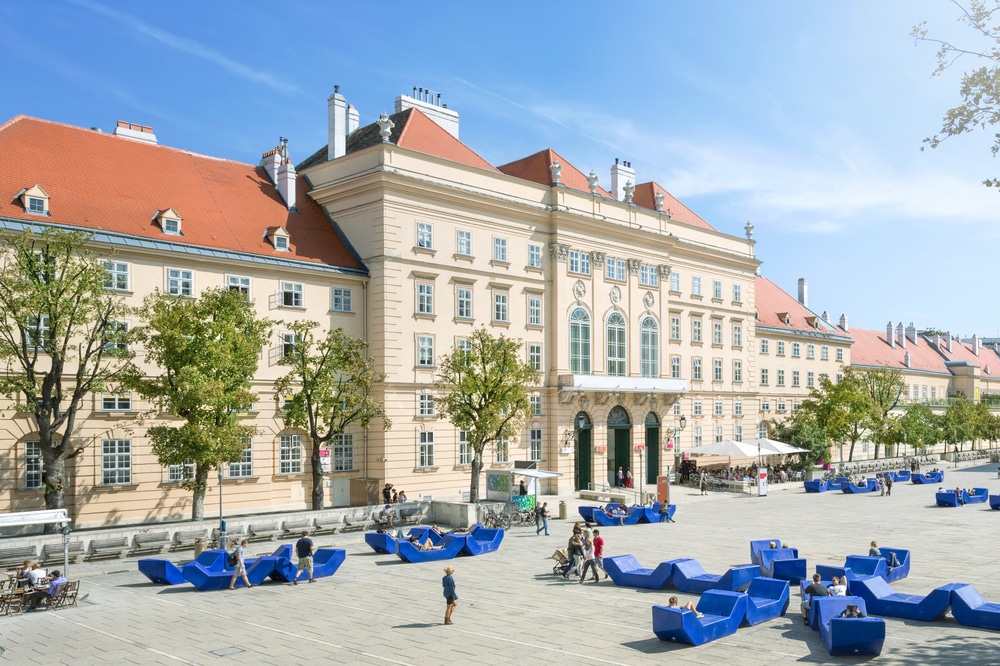 Source: mRGB / shutterstock
Source: mRGB / shutterstockSlap bang in the central 7th District is one of the largest cultural quarters in the world, boasting no fewer than 60 cultural institutions in nine hectares.
The MuseumsQuartier is a blend of the modern and historic, where statement architecture and urban design from the 2000s shares the spotlight with Imperial architecture from the 18th and 19th centuries.
Greeting your arrival for instance is the imposing facade of the former court stables.
Beyond this gateway is a mini city dedicated to art, fashion, theatre, architecture, dance, music, new media, children’s culture and more.
Some of the big hitters are the Museum of Modern Art Ludwig Foundation, the Leopold Museum, the Kunsthalle Wien for contemporary art, Az W Architekturzentrum Wien, the Halle E + G event stage and the ZOOM Children’s Museum.
Website: https://www.mqw.at/
8. Prater
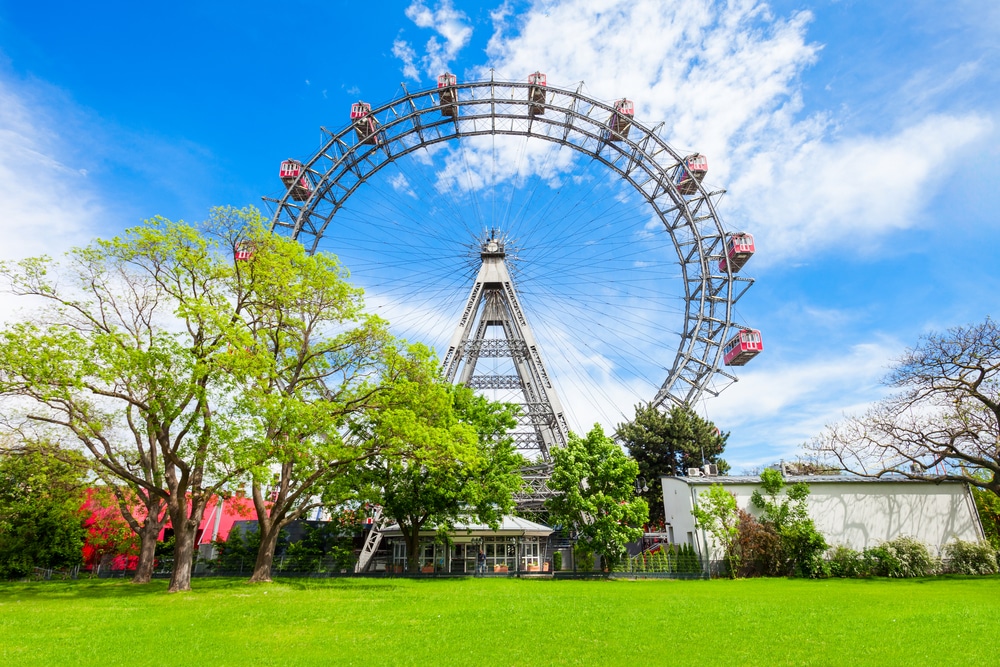 Source: saiko3p / shutterstock
Source: saiko3p / shutterstockEmperor Joseph II opened up this former hunting ground to the public in 1766, allowing coffeehouses and cafes to be established in the park.
This step eventually paved the way for the Wurstelprater, the amusement park that occupies the park’s north-west corner.
A modern icon for the Wurstelprater and Vienna is the Riesenrad, a giant Ferris wheel just shy of 65 metres tall and dating right back to 1897. The panorama of Vienna from this ride, one of 250 attractions in the park, is sensational.
It would take forever to list everything else going on in the Prater, but to skim the highlights there’s a surfeit of food and drink options, a museum for the amusement park, Austria’s largest disco, a narrow-gauge railway, Austria’s national football stadium and the stately main avenue, Hauptallee, lined with chestnut trees.
Website: https://www.praterwien.com/
9. Imperial Treasury
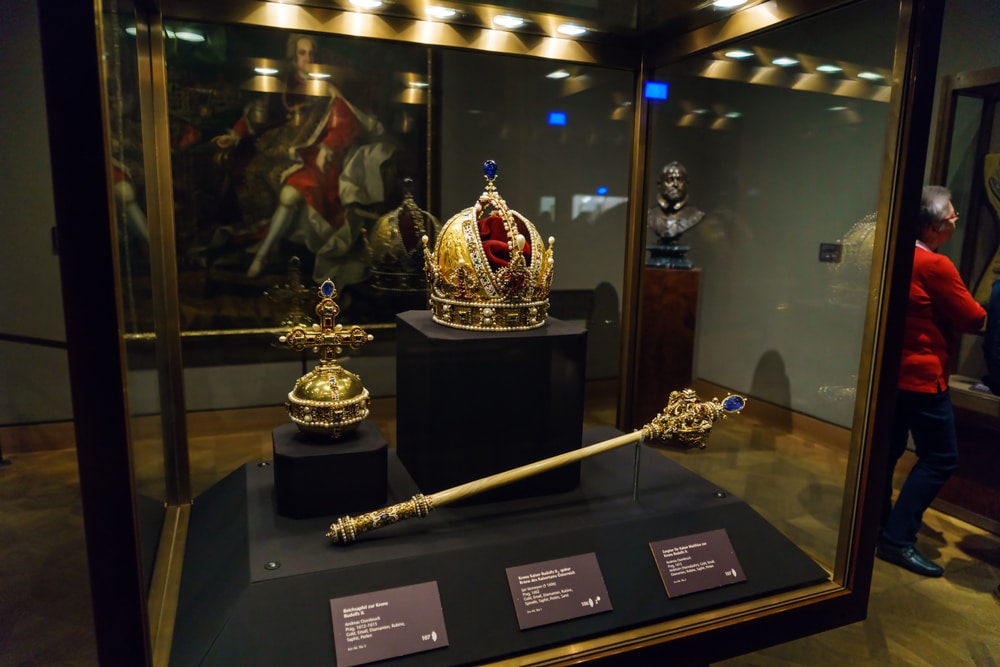 Source: Rostislav Ageev / shutterstock
Source: Rostislav Ageev / shutterstockAt the Hofburg the invaluable riches of the House of Habsburg are displayed to the world in the Imperial Treasury.
This unparalleled collection of rare treasures is distributed across 21 rooms and organised between ecclesiastical and secular items.
If there’s one outstanding piece it’s the 10th-century Imperial Crown of the Holy Roman Empire, the octagonal hoop crown used in the coronation of each new emperor up to the empire was dissolved in 1806. Also exceptional is the Austrian Imperial Crown (1602), produced in Prague in the Mannerist style for Rudolf II.
In a dazzling succession of display cases are sceptres, orbs, ceremonial swords, robes and jewels too big to fit on crowns, along with religious pieces like devotional images and altars.
Website: https://www.kaiserliche-schatzkammer.at/
10. Albertina
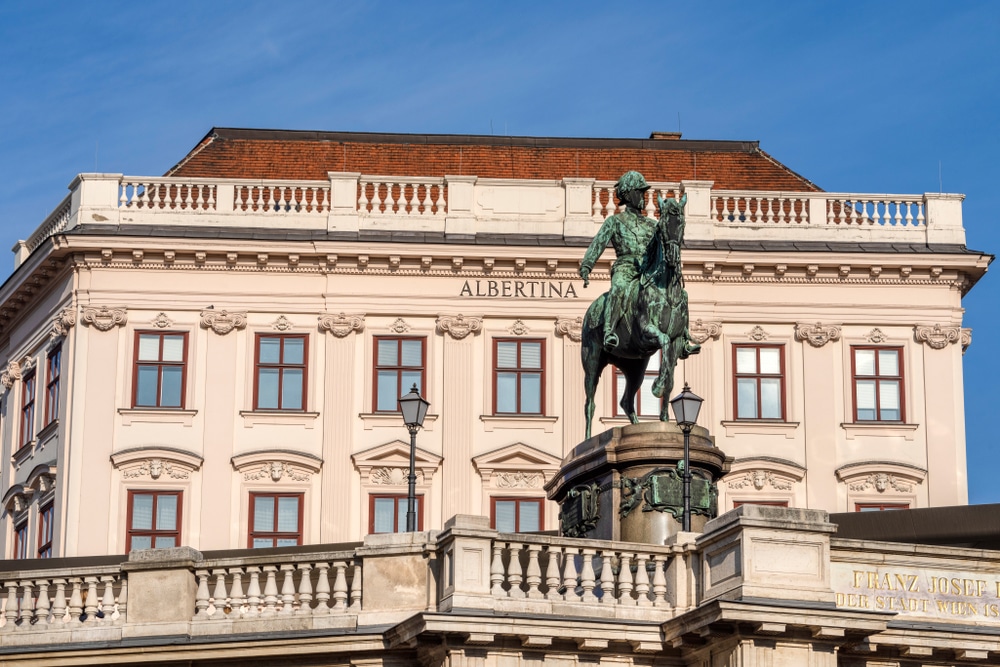 Source: Rolf G Wackenberg / shutterstock
Source: Rolf G Wackenberg / shutterstockFamed for a huge collection of old master prints, the Albertina is an art museum in a palace dating back to the 1740s.
The palace rests atop one of the last surviving pieces of Vienna’s fortifications, the Augustinian Bastion, and was built for a friend and advisor of Maria Theresa.
The collection was founded in 1776 by Duke Albert of Saxony-Teschen, a son-in-law of Maria Theresa, who lived here.
It comprises celebrated works by Brueghel, Dürer, Michelangelo, Raphael and Rubens, as well as masterpieces from the likes of Klimt, Monet, Schiele, Picasso and Cézanne.
Such is the size of the collection and the challenge of hanging it in this historic palace, that only a fraction of the collection is on show at any time.
Essential to any visit is a tour of the State Rooms with parquet floors, delicate inlaid wood, gilded carvings, lots of original furniture and an opulent colour scheme of green, yellow and turquoise.
In 2020 a second location for the museum, Albertina Modern, opened on Karlsplatz and is dedicated to modern and contemporary art from that vast inventory.
Website: https://www.albertina.at/
11. Vienna State Opera
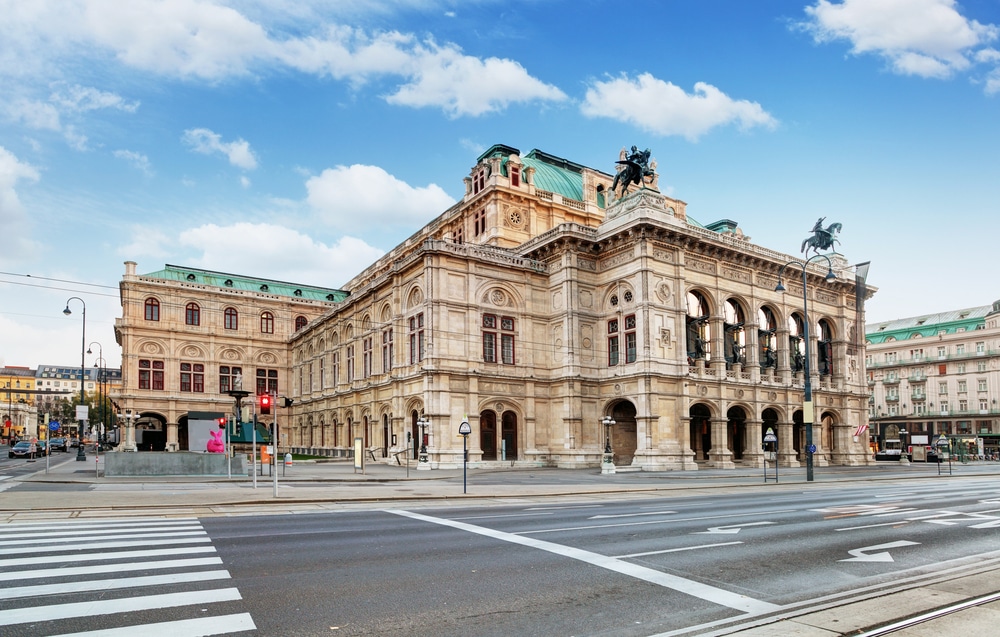 Source: TTstudio / shutterstock
Source: TTstudio / shutterstockThe first major construction to crop up on Ringstrasse was the Renaissance Revival state opera building, inaugurated in 1869. Then known as the Vienna Court Opera, the building’s opening was attended by Franz Joseph I and Elisabeth of Austria.
The venue stands as one of the world’s foremost opera houses, with the finest artists in their fields appearing in 350 performances a season, from a repertoire of 60 operas and ballets.
The orchestra shares members with the Vienna Philharmonic, while the Vienna State Ballet, also based here, employs some 100 dancers.
If a performance isn’t enough you can take a guided tour for captivating titbits about the architecture, exquisite interiors, the day-to-day management and the many distinguished artists to have performed here.
Website: https://www.wiener-staatsoper.at/
12. Schlosspark Schönbrunn
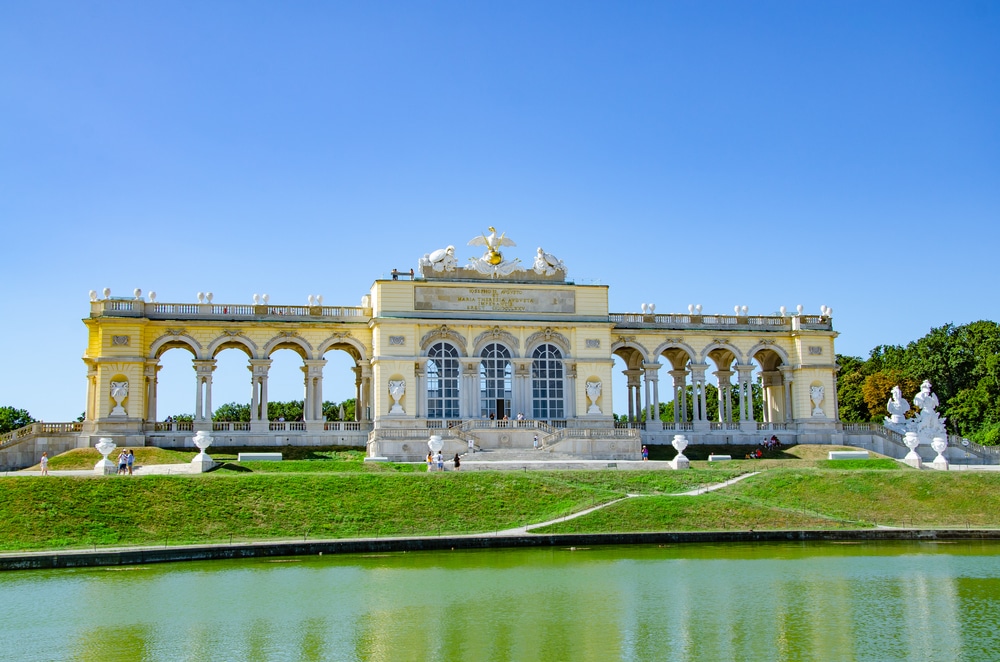 Source: Sova Olena / shutterstock
Source: Sova Olena / shutterstockYou don’t have to pay a thing to take a turn in the Schönbrunn gardens, which are brimming with sculpture and important monuments.
These have been open to the public since 1779 and have dimensions befitting an emperor’s backyard, at roughly one kilometre by one kilometre.
A fine starting point for a walking tour would be the space between the palace and the iconic Neptune Fountain, dubbed the Great Parterre and laid out at the end of the 17th century by a disciple of André Le Nôtre.
The fountain was ordered by Maria Theresa in 1776 and took four years to complete and is crowned by the namesake sea god and his entourage.
On an axis with the Grand Parterre and commanding a stirring view of the palace and city is Maria Theresa’s Gloriette (1776), a hilltop colonnade and pavilion glorifying Habsburg power.
The Roman Ruins (1778), east of the Neptune Fountain, are a detailed folly from the Romantic period.
Website: https://www.schoenbrunn.at/en/about-schoenbrunn/gardens
13. Naschmarkt
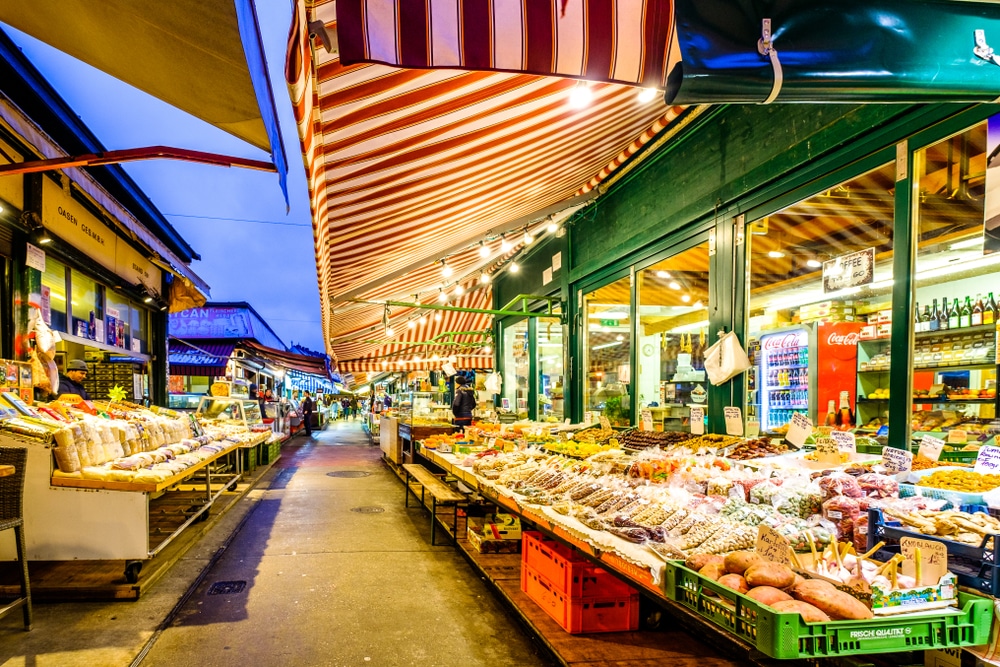 Source: FooTToo / shutterstock
Source: FooTToo / shutterstockThe story of Vienna’s favourite street market goes way back to the 16th century as a place to buy milk bottles.
These were made out of ash wood, or Asch in German, which is the origin of the name.
The market gained its current proportions after 1793 when it was decreed that all goods arriving in Vienna by carts, as opposed to on the Danube, had to be sold here.
Naschmarkt trades daily from dawn to dusk and has a very international selection of fresh produce and hard-to-find artisan goodies.
A very cosmopolitan array of eateries have set up on the market’s fringes, whether you’re up for first-rate Viennese cuisine or something more exotic, like shakshuka, scampi alla busara, sushi, falafel, Sichuan street food or pizza.
On Saturdays the Naschmarkt spreads out further along the Wienzeile for a flea market that has picked up a big following.
14. Leopold Museum
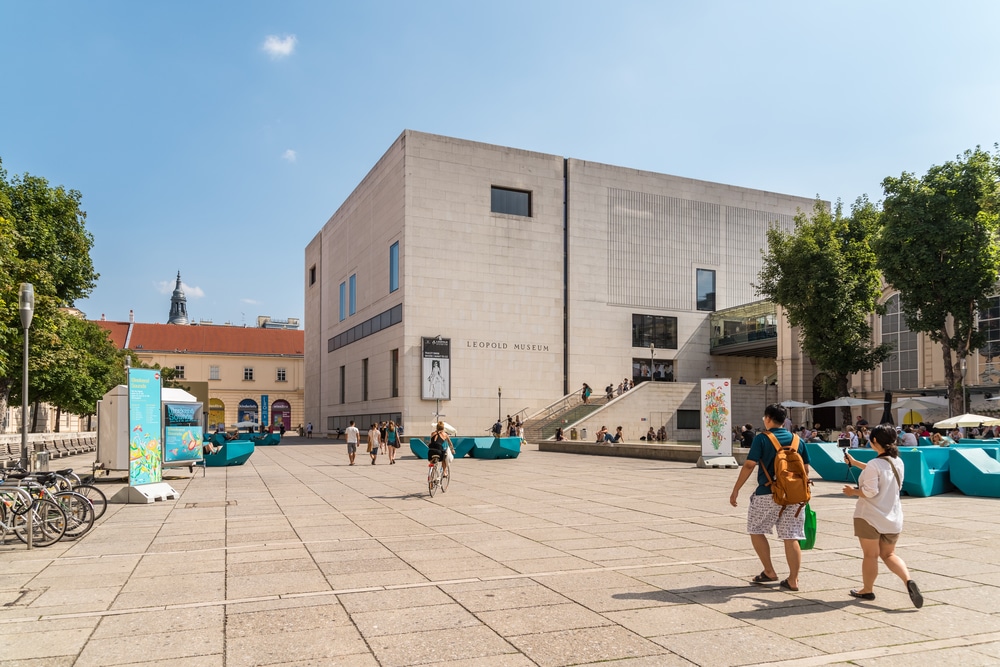 Source: Radu Bercan / shutterstock
Source: Radu Bercan / shutterstockThe world’s largest collection of works by Egon Schiele awaits at this museum centred on Art Nouveau and the Vienna Secession.
The Schiele collection comprises more than 40 paintings, including masterworks like Portrait of Wally (1912), as well as 180 drawings and scores of manuscripts.
Much of the museum’s inventory comes from the collection of Rudolf Leopold (1925-2010), who had an eye for Gustav Klimt and the multidisciplinary artists and designers of Art Nouveau Vienna.
Also on show at the Leopold Museum are earlier 19th-century works, and important pieces by Austrian Expressionists like Oskar Kokoschka, Anton Kolig, Richard Gerstl, Herbert Boeckl and Anton Faistauer,
Website: https://www.leopoldmuseum.org/
15. Museum for Applied Arts (MAK)
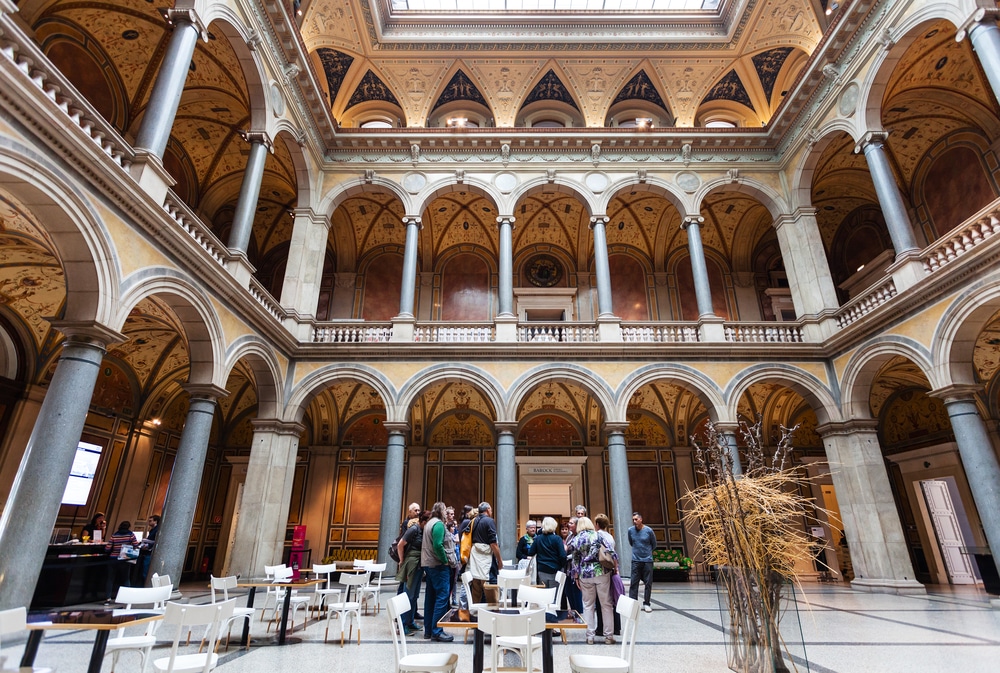 Source: vvoe / shutterstock
Source: vvoe / shutterstockAs a hotbed for Art Nouveau, Vienna broke the mould for decorative arts at the turn of the century.
At the Museum for Applied Arts you can check out the highly creative and luxurious silver, china and textiles produced in the 1900s by the Wiener Werkstätte, which would later influence Bauhaus and Art Deco.
The museum also holds Austria’s largest collection of bentwood chairs by the great Michael Thonet (1796-1871), as well as china, glass, textiles and silver from Medieval times to the present day.
Klimt is here too, in the Tree of Life (1909) from the Stoclet Frieze, commissioned for Palais Stoclet in Brussels.
And in addition to all this the museum has extensive collections for porcelain, lacquerwork, woodcuts and porcelain from Japan and China.
Website: https://www.mak.at/
16. Museum of Natural History
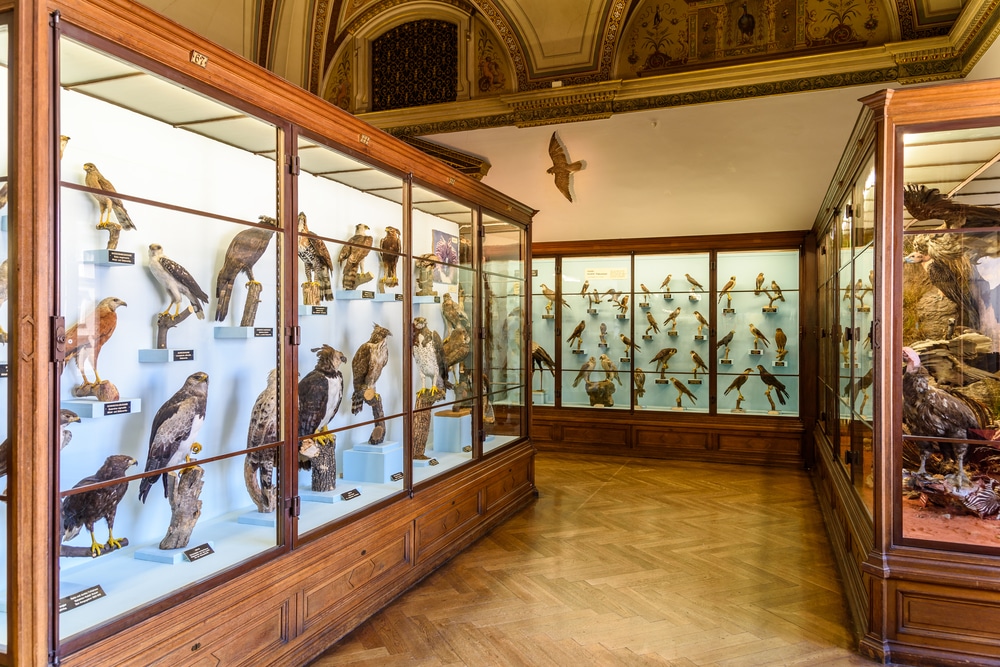 Source: Radu Bercan / shutterstock
Source: Radu Bercan / shutterstockVienna has a natural history museum of international standing, with collections that were first gathered in the mid-18th century in the time of Maria Theresa.
In 1750, her husband Francis I purchased what was then the largest and most renowned collection of natural history specimens in the world.
This was augmented during the 19th century by expeditions to the Brazilian rainforests, the circumnavigation by the SMS Novara (1857-59) and the Tegetthoff North Pole expedition of 1873. Kids will be thrilled with the Dinosaur Hall, with large skeletons of an Allosaurus, Diplodocus and Iguanodon that can be seen from all sides, while among the other halls are world-class exhibits for meteorites, prehistory, anthropology, earth history and minerals, gemstones & rocks.
In Prehistory you’ll come face-to-face with the Venus of Willendorf, standing 11.1 centimetres tall and carved from limestone some 30,000 years ago.
Website: https://www.nhm-wien.ac.at/
17. Café Central
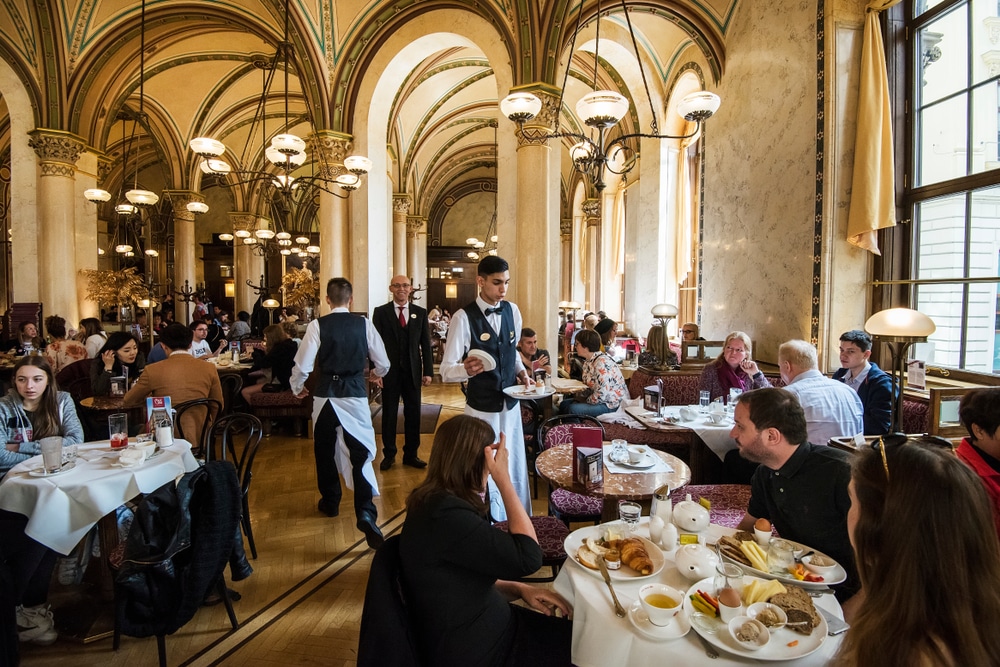 Source: Giannis Papanikos / shutterstock
Source: Giannis Papanikos / shutterstockVienna has scores of elegant coffeehouses, but there’s a reason why Café Central (est. 1876) has such mystique.
Had you come here for coffee and cake in days gone by you might have found yourself rubbing shoulders with characters like Sigmund Freud, Leon Trotsky, architect Adolf Loos and any number of important writers and artists.
With grand architecture, crisp service and suitably plush interiors Café Central remains extremely popular today as a celebration of Vienna’s cafe culture.
Order Viennese classics like wiener schnitzel, sachertorte (rich chocolate cake with apricot jam) and apfelstrudel and reminisce.
Website: https://www.cafecentral.wien/
18. Hundertwasser House
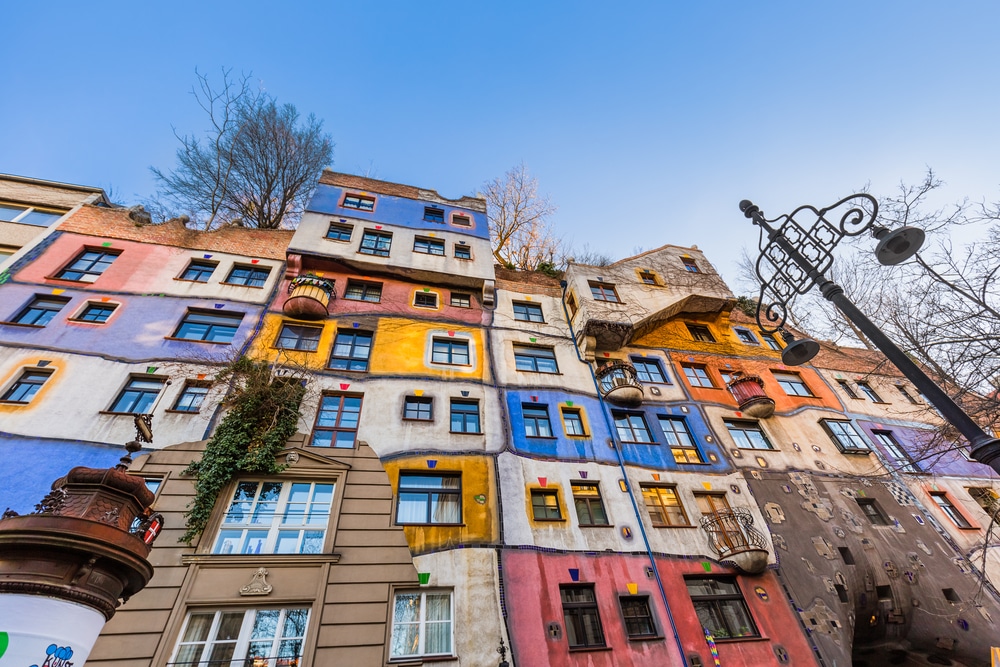 Source: Tatiana Popova / shutterstock
Source: Tatiana Popova / shutterstockA welcome palate cleanser in a trip full of Holy Roman grandeur is this apartment building in the Landstraße designed by Friedensreich Hundertwasser (1928-2000). True to Hundertwasser’s inimitable style, the building is an engaging and precarious-looking muddle of forms and colours.
The residents are free to decorate the facades of their apartments as they want, and in keeping with Hunderwasser’s eco-friendly ethos, the building is like a vertical forest with more than 200 trees and shrubs growing on the tangle of balconies and terraces.
The Hundertwasser House is private property, but you can stay on the trail of its creator, dropping by the Hundertwasser Village opposite and the nearby Kunst Haus Wien.
Both were designed by the architect, and the latter has a permanent exhibition on his career.
19. Secession Building
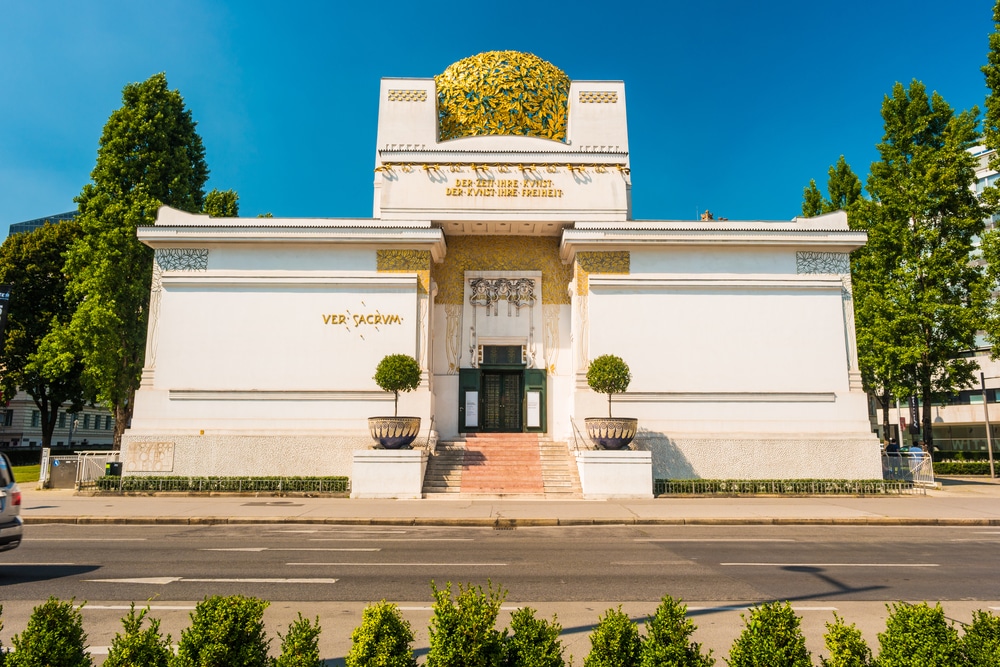 Source: Romas_Photo / shutterstock
Source: Romas_Photo / shutterstockIn 1897 Gustav Klimt and a group of like-minded painters, graphic designers, architects and sculptors broke away from the Association of Austrian Artists, protesting its devotion to what they saw as stuffy historicism and artistic nationalism.
So was born the Vienna Secession, a movement closely associated with Art Nouveau.
The Secession Building (1898) was funded by the industrialist father of Ludwig Wittgenstein and caused a sensation in Vienna society.
The leafwork on the dome is especially eye-catching, earning it the nickname, “Golden Cabbage”. Klimt fans will lose no time hunting down the Beethoven Frieze, an interpretation of Beethoven’s 9th Symphony, 34 metres long and found in the basement.
The building continues to be used for cutting-edge exhibitions by the Association of Visual Artists Vienna Secession.
Website: https://www.secession.at/en/
20. Döbling District
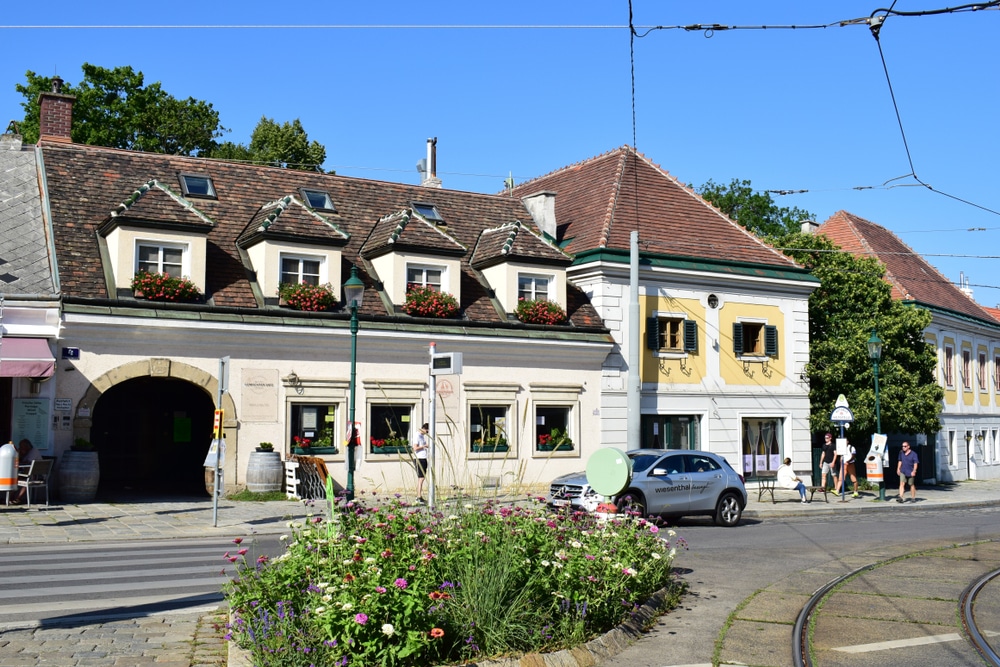 Source: Kagan Kaya / shutterstock
Source: Kagan Kaya / shutterstockYou can take time out at Vienna’s upmarket 19th district, set against the Danube and the wood-covered slopes of the Wienerwald.
High on Vienna’s northern margins, Döbling is a cluster of picturesque wine-growing villages and vineyards.
This area has always appealed to the wealthy who would come to get away at the Heurigen (wine taverns) or establish hunting lodges and estates amid the hills.
To quaff wine in a traditional setting, look no further than Grinzing, which is flush with Heurigen, some with not much more than snacks for accompaniment and others with lavish menus.
And for sumptuous views you can climb into the Wienerwald and cast your gaze back over Vienna from places like Am Himmel and Kahlenberg.
21. State Hall of the Austrian National Library
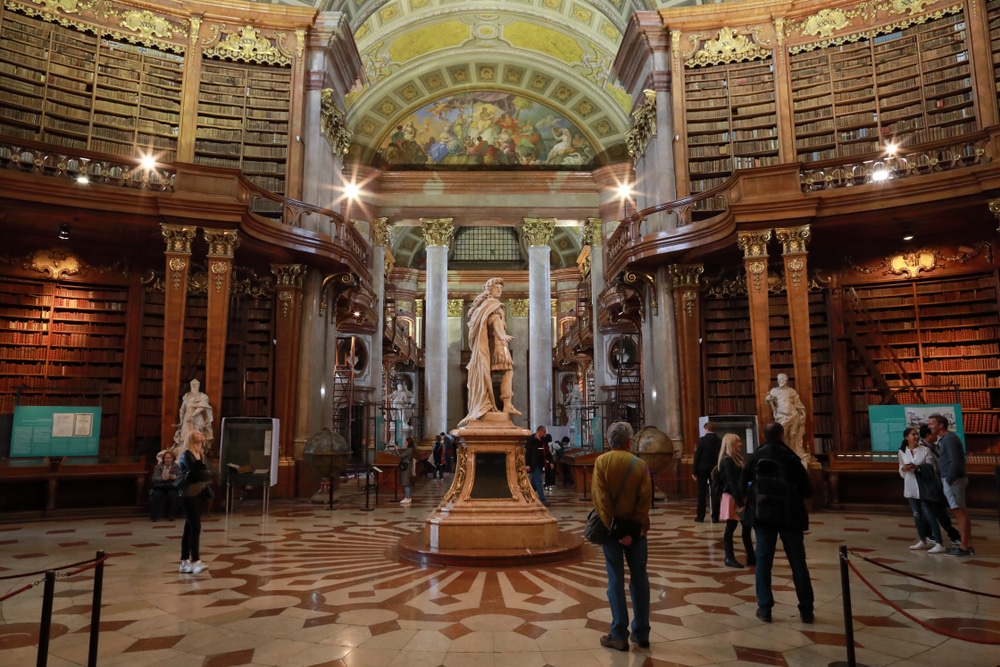 Source: Nazar Skladanyi / shutterstock
Source: Nazar Skladanyi / shutterstockThe dumbfounding Austrian National Library, previously the Imperial Court Library, is in the Neue Burg Wing of the Hofburg.
There, holding over 200,000 volumes, the State Hall has a scale and magnificence awesome even by Vienna standards.
Twenty metres high, eighty metres long and rich with sculpture and frescoes, the State Hall was begun in the early-1720s by Johann Bernhard Fischer von Erlach and completed after his death by his son Joseph Emanuel.
Gaze up at the intricately adorned central dome, and decipher the ostentatious fresco, in which Emperor Charles VI’s image is held by Hercules and Apollo.
Also see if you can make out the four Venetian globes, each with a diameter of more than one metre.
Website: https://www.onb.ac.at/en/museums/state-hall
22. Karlskirche
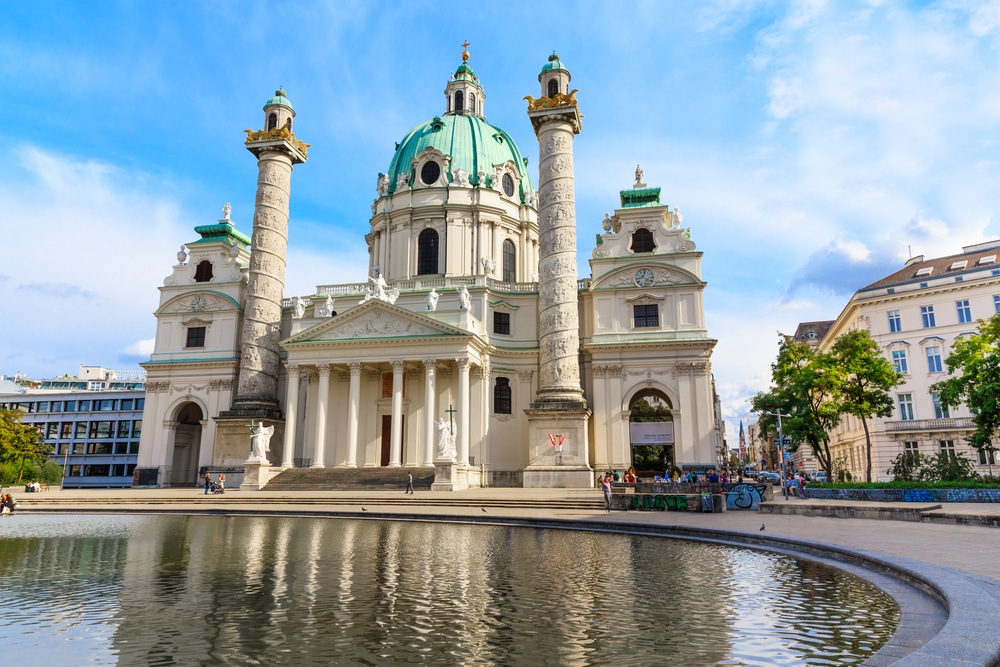 Source: Umberto Shtanzman / shutterstock
Source: Umberto Shtanzman / shutterstockIn 1713, in the wake of Vienna’s last big plague epidemic, Charles VI resolved to build a church consecrated to his namesake patron saint, Charles Borromeo, who was canonised partly for his fight against the plague in the 16th century.
The man hired to design the Karlskirche was Baroque master Fischer von Erlach, and the result is one of Vienna’s most radiant Baroque monuments.
Part of a magnificent ensemble, the church was completed in 1739 and has lost none of its majesty, best encapsulated by the dome and the two flanking columns of bas reliefs.
Those columns depict scenes from Charles Borromeo’s life and evoke the two columns that stood in front of the Temple at Jerusalem, while the dome’s fresco depicts an intercession by Borromeo, together with the Virgin Mary and surrounded by the Cardinal Virtues.
Website: http://www.karlskirche.at/
23. Peterskirche
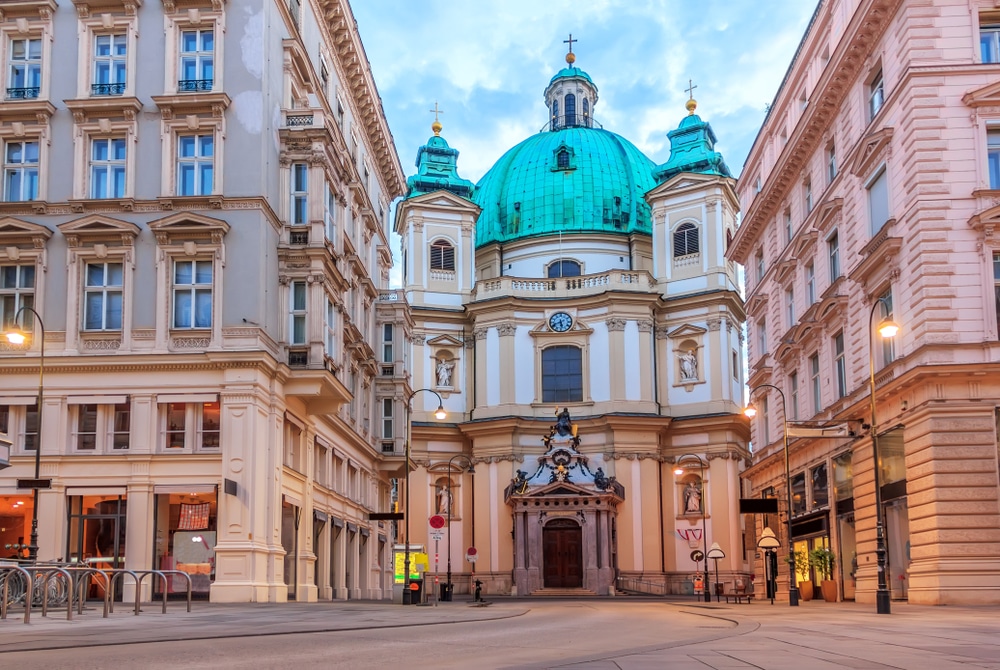 Source: AlexAnton / shutterstock
Source: AlexAnton / shutterstockWandering along the splendid Graben pedestrian street, your attention will be drawn by the facade of this Baroque church through a parting in the buildings.
Peterskirche is moderately sized but its interior, restored to its original brilliance in the 90s and 2000s, needs to be seen.
Within, the vivid frescoes were painted by Johann Michael Rottmayr (1656-1730), whose work can be admired across Vienna, but particularly at Karlskirche.
In the cupola rising 50 metres over the floor is a depiction of the Coronation of Our Lady, while on the triumphal arch you can make out the coat of arms of Leopold I.
Other details that demand a moment or two are the high altar with an altarpiece by Martino Altamonte (1657-1745), the marvellous gilded pulpit (1726) and the Baroque organ (1751).
Website: http://www.peterskirche.at/
24. Rathaus
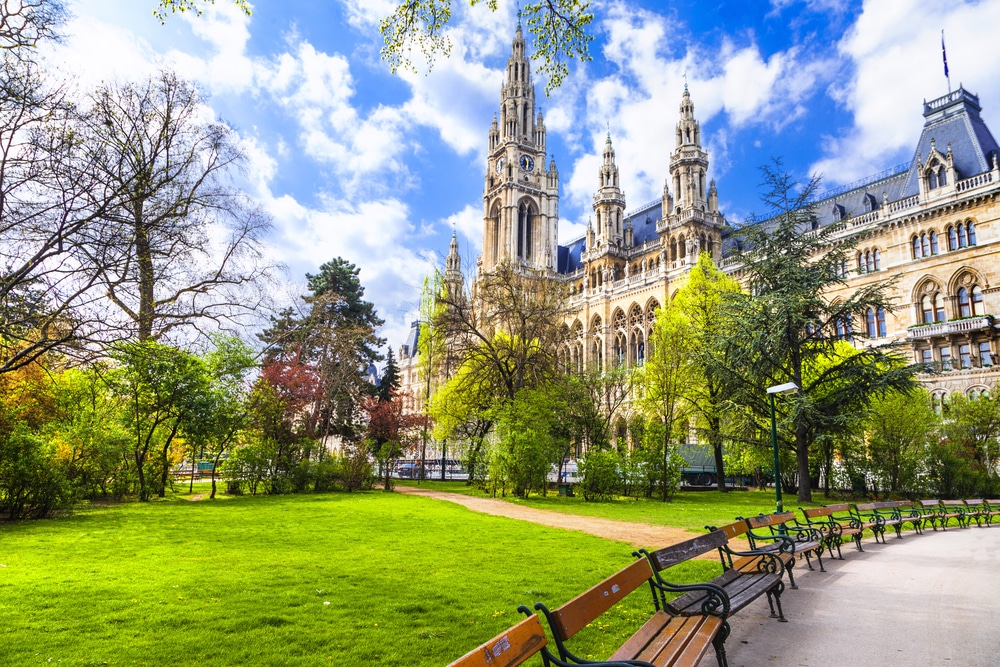 Source: leoks / shutterstock
Source: leoks / shutterstockVienna’s most striking neo-Gothic building still contains the office for the mayor, the city council chambers and the Vienna Landtag diet.
Completed in 1883 after more than a decade of construction, Vienna City Hall took design inspiration from the late-Gothic secular buildings of Flanders and Brabant, notably Brussels Town Hall.
The building makes its mark on the Viennese skyline thanks to the 98-metre central tower, and this is topped by the 3.4-metre, standard-bearing statue of the Rathausmann, a standard-bearing symbol for the city.
You can see a replica below in Rathauspark, or go in for a guided tour to see the gears of government turning and to enter spaces like the magnificent festival hall (Festsaal).
Website: https://www.wien.gv.at/english/cityhall/
25. Burgtheater
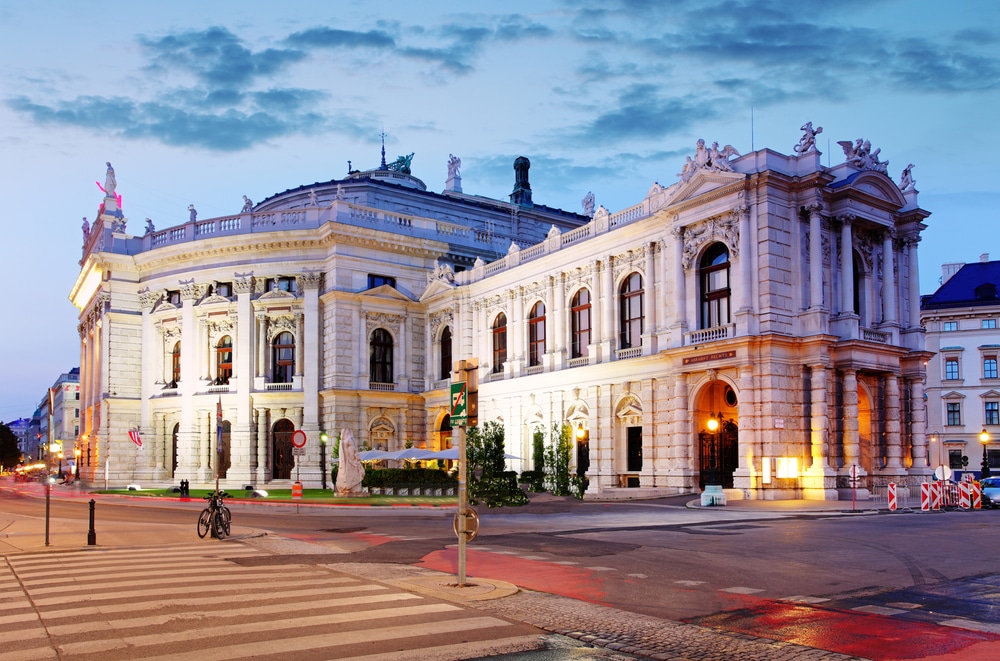 Source: TTstudio / shutterstock
Source: TTstudio / shutterstockOpposite the Rathaus, you can’t overstate the value of this theatre to culture in the German-speaking world.
The roots of the Burgtheater reach back to the Court and National Theatre established by Joseph II in 1776. Today’s striking Renaissance Revival building was built between 1874 and 1888 to designs by Karl von Hasenauer (facade) and Gottfried Semper (floor plan). Now it needs to be said that all of the performances at this cultural mainstay are in German, which pushes it down this list a little But there are English-language tours of the building, well worth taking.
You’ll learn about the inner-workings of this august venue, and see the grand staircases, which have ceiling frescoes by a young Gustav Klimt.
Website: https://www.burgtheater.at/